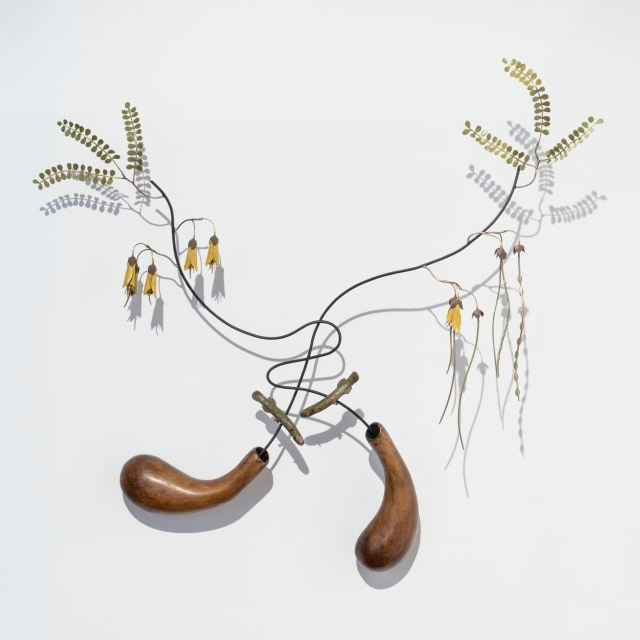For decades, one of New Zealand’s most pre-eminent sculptors, Bing Dawe, has been encouraging us all to engage with our environment. In capturing the essence of our natural landscape, he poses the question, “In embracing the latest technologies have we distanced ourselves from the natural cycles of life?” The modern world seems to revolve around consumerism, yet in contrast, Dawe highlights the beauty and delicacy of the natural environment. In doing so, he addresses human impacts on environments and ecosystems, forefronting prevalant issues relating to global environmental crises.
Born in Glenavy, New Zealand in 1952, alongside the Waitaki and Waiho rivers, Dawe’s childhood was full of fishing, catching eels and becoming familiar with the rivers’s bio-diversity and ecosystems. These experiences were crucial to Dawes’ later artistic practice through his exploration of the delicate balance required to support life in this environment. Recently his works have focused on the vulnerability of our native species, both fish and birds. Often his sculptures convey notions of presence and absence, gesturing towards the possible loss of these smaller species as a result of human impact on their natural habitat.
In 1999, the survey exhibition at the Robert McDougall Art Gallery, Christchurch, ‘Bing Dawe: Acts of Enquiry' spanned a period of more than 20 years. This survey exhibition included works that he collaborated on with notable New Zealand artist, Ralph Hotere. These were a series of 'endangered species' sculptures as part of a protest against the proposed Aramoana smelter near Dunedin. In 2018, Ashburton Art Gallery curated an exhibition of thirteen artists who “explored the cultural, conceptual and imaginative qualities of water in Canterbury and its crucial role in the well being of our communities”. Dawe was chosen as one of these artists. The work Titipounamu was one of a series of his works included, which come under the title,ʻA Landscape With Too Many Holes’. The work depicts a ’necklace’ which represents the delicate existence of the rifleman bird in New Zealand. On one side we see the beauty of the native bird, whereas on the other, we see the gaping void left in the landscape once the species begins to decline. Dawe says the sculpture is “about the balance of the negative and positive of things. As we celebrate and appreciate what we have, we must remind ourselves to be ever-vigilant of what we have lost.” Due to the importance of this topic nationwide, the show was then exhibited throughout New Zealand.
Through beautiful carved and formed wooden and steel sculptures, Dawe shows the struggles faced by our native eel as we damn our waterways and divert rivers for irrigation and electricity generation. Similarly, the tiny kokopu fish also known as ‘stargazers’ or ‘whitebait’ shown in his Galaxiidae series, (hence the constellations in the hemispheres and circles of his sculptures), are harvested young. They are vulnerable particularly to degrading water quality in our rivers and dramatically reduced flows caused by irrigation and electricity generation. Through the placement of steel wires and barriers, Dawe again creates beautiful sculptures that connect these endangered fish to the sky above us. By presenting nature's negative and positive spaces and highlighting the manmade barriers which intercept these natural pathways, Dawe’s works are both achingly beautiful and hauntingly foreshadowing of the true state of our natural world’s decline.
Dawe graduated from the University of Canterbury's School of Fine Arts in 1976 and has since had numerous solo exhibitions including a major retrospective at the Robert McDougall Art Gallery in 1999. He is the recipient of many awards including the highly prestigious Wallace Visa Gold Art Award. He worked as an art educator at the Ara Institute of Canterbury for 28 years until 2017. His work can be found in significant public and private collections both in New Zealand and overseas, including public art commissions in Auckland, Wellington, Christchurch and Rotorua.
